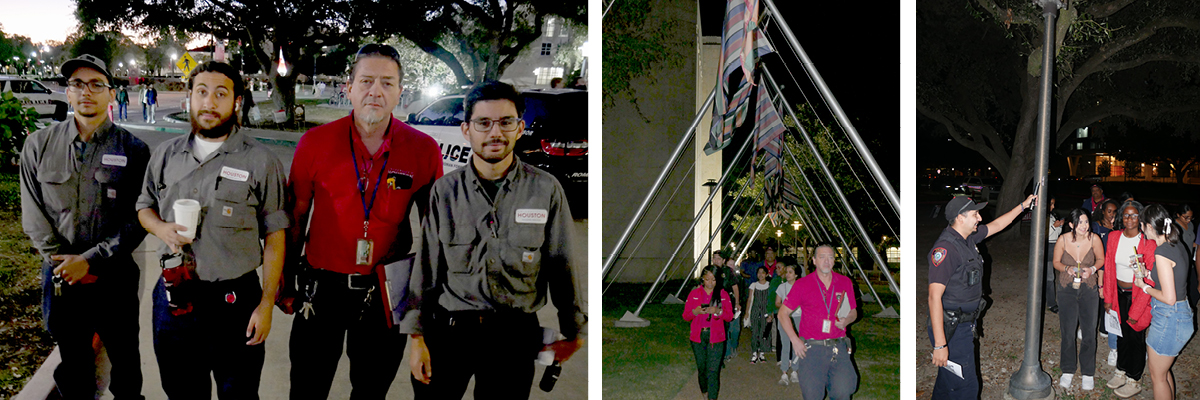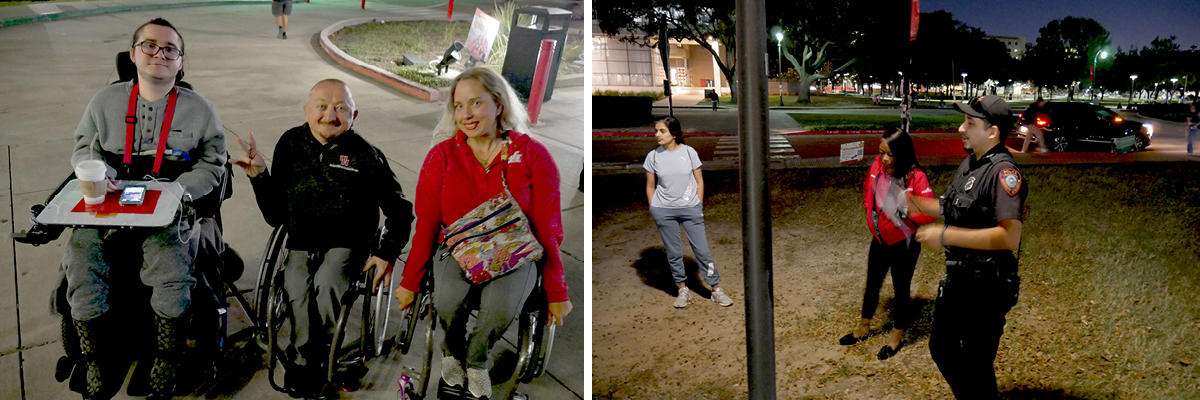
The University of Houston Police Department hosted its annual Walk in the Dark community event in November. This event allowed students, faculty, and staff to walk the campus at night alongside UHPD officers to identify areas that could benefit from safety improvements, such as increased lighting.
This year, students, faculty, and staff also walked the campus with members of Facility Services, FIXIT, Student Government Association leaders, and Justin Dart Jr. Student Accessibility Center staff.
The student-heavy crowd grabbed a cup of hot chocolate before separating into three groups with each being led by an UHPD officer.
Each group then walked towards a separate part of the university with the goal of finding areas that need better or improved lighting.
Beyond looking for areas to improve, the students learned how they can report non-working lampposts to FIXIT with accuracy.

On the walk, the group with UHPD Crime Prevention Officer Felipe Gutierrez spotted a lamppost not working. Guitierrez approached the defective lamppost and showed the group that each lamppost has an individual number. When a UH community member contacts FIXIT, they can give that number and FIXIT will know exactly what lamppost it is.
Freshman Daniela Garcia was among the students that learned how to report a broken lamppost to FIXIT and saw firsthand how the lights work on an automatic system during the walk.
“Seeing it in action and seeing how sometimes it can fail in certain areas, but then it just takes a bit of time [to turn on], that was good to see,” said Garcia.
Graduate student Sapna Budhrani also learned how to report broken lampposts to FIXIT and said she’s going to take it upon herself to report the non-working lights she sees while walking the university.

The sentiment is one that Garcia shares as well. She said taking part in the event has given her the knowledge needed to take matters into her hands to non-working lights.
For Lloyd Greenard, Assistant Director of Facilities Services and Operation, taking part in Walk in the Dark allows him to hear from students on how they see the campus at night. This year’s Walk in the Dark marked the second one for Greenard.
“I treat all the students as if they were my children and knowing how their parents would feel to have lighted routes, it’s really important to me,” said Greenard.
With the success of the Walk in the Dark events, Gutierrez said the department is working with DART to establish an Accessibility Walk starting in 2025. The walk, still in the works, will take place during the day.
As for this year’s Walk in the Dark, Gutierrez said it was another successful event to help the university become safer.